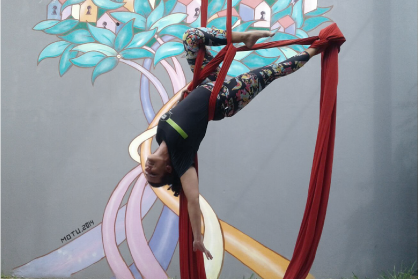An
Osteopath
near me?
Would you like to make an appointment?
Have a question? Let’s chat.
Women’s Health Specialism
 Osteopaths can play a significant role in addressing various women’s health issues through a holistic approach to healthcare. Osteopathic treatment focuses on the body’s musculoskeletal system and its connection to overall health. Here are some ways osteopaths can help with women’s health:
Osteopaths can play a significant role in addressing various women’s health issues through a holistic approach to healthcare. Osteopathic treatment focuses on the body’s musculoskeletal system and its connection to overall health. Here are some ways osteopaths can help with women’s health:
Menstrual Pain and Irregularities
- Pain Relief: Osteopaths can use techniques to alleviate pelvic pain associated with menstrual cycles, such as myofascial release, gentle manipulation, and soft tissue massage.
- Cycle Regulation: Osteopathic treatment can help improve blood flow and reduce tension in the pelvic area.
Pain during intercourse (dyspareunia)
- Pain Relief: Osteopaths can use techniques to reduce tension on the pelvic floor – which is one of the most common causes of dyspareunia due to myofascial syndrome.
- Educating: Osteopaths can prescribe specific exercises to improve pelvic floor control, reduce muscle tension, and allow muscles to contract and relax more efficiently.
Pregnancy and Postpartum Care
- Pain Management: During pregnancy, women often experience back pain, pelvic pain, and sciatica. Osteopaths can provide safe, gentle treatments to relieve these discomforts.
- Preparation for Birth: Osteopathic techniques can help prepare the body for childbirth by ensuring the pelvis and surrounding structures are balanced and mobile.
- Postpartum Recovery: Post-birth osteopaths can assist with recovery, addressing issues such as pelvic floor dysfunction, lower back pain, incontinence, prolapses, and postural changes due to breastfeeding and carrying the baby.
Pelvic Floor Dysfunction
- Osteopaths can help strengthen and relax the pelvic floor muscles, which can alleviate symptoms of urinary incontinence, pelvic organ prolapse, and chronic pelvic pain.
Fertility Issues
- Supporting Fertility: Osteopathic treatment can improve blood flow and reduce tension in the pelvic region, which may help with pain during intercourse. Techniques to enhance the function of the pelvis can support reproductive health.
Endometriosis, fibroids, adenomyoma, and PCOS (Polycystic Ovary Syndrome)
- Symptom Management: Osteopathic manipulative treatment (OMT) can help manage pain and discomfort associated with conditions like endometriosis and PCOS by improving pelvic mobility and reducing inflammation.
Menopausal Symptoms
- Alleviating Discomfort: Osteopaths can help manage symptoms of menopause, such as joint stiffness, hot flashes, and osteoporosis, through techniques that improve overall mobility and circulation. They can also provide lifestyle advice to help manage symptoms.
Digestive Health
- Improving Function: Osteopathic treatment can help enhance digestive function and benefit women experiencing digestive issues related to hormonal changes, pregnancy, or stress.
Stress and Mental Health
- Holistic Approach: Osteopaths often take a holistic approach to health, which includes addressing stress and emotional well-being. Techniques such as cranial osteopathy can help reduce stress and promote relaxation.
Chronic Pain Conditions
- Managing Chronic Conditions: Osteopaths can provide relief for chronic pain conditions such as fibromyalgia and chronic fatigue syndrome, which disproportionately affect women, through gentle manipulative techniques and lifestyle advice.
Treatment Methods Used by Osteopaths
- Manual Therapy: This includes stretching, gentle pressure, and resistance to improve the movement of joints and muscles.
- Cranial Osteopathy: A gentle form of osteopathy focusing on the subtle movements of the skull and its impact on the central nervous system.
- Soft Tissue Techniques: These techniques release muscle and connective tissue tension.
- Exercise Prescription: Osteopaths often recommend specific exercises to help strengthen muscles and improve posture and mobility.
- Lifestyle and Nutritional Advice: Providing advice on diet, exercise, and other lifestyle factors to support overall health and well-being.
Conclusion
Osteopaths can offer a comprehensive and individualized approach to women’s health issues, focusing on improving physical function, reducing pain, and promoting overall wellness. By addressing the root causes of discomfort and imbalance, osteopathic treatment can significantly enhance the quality of life for women facing various health challenges.











